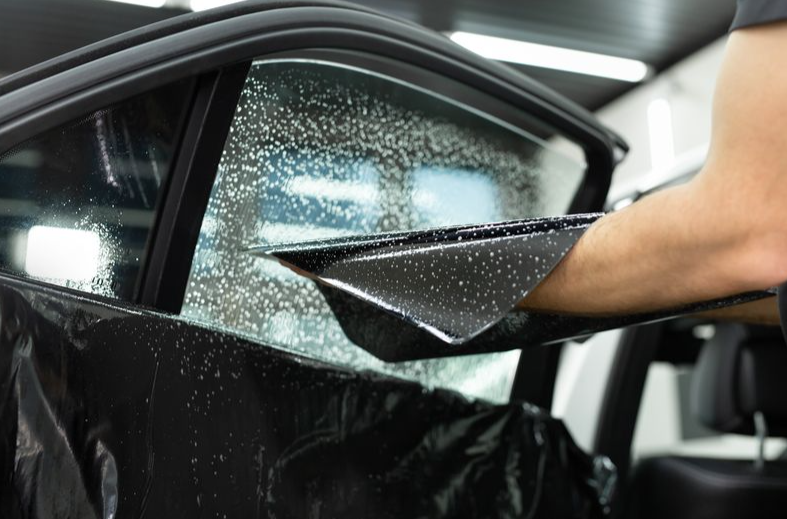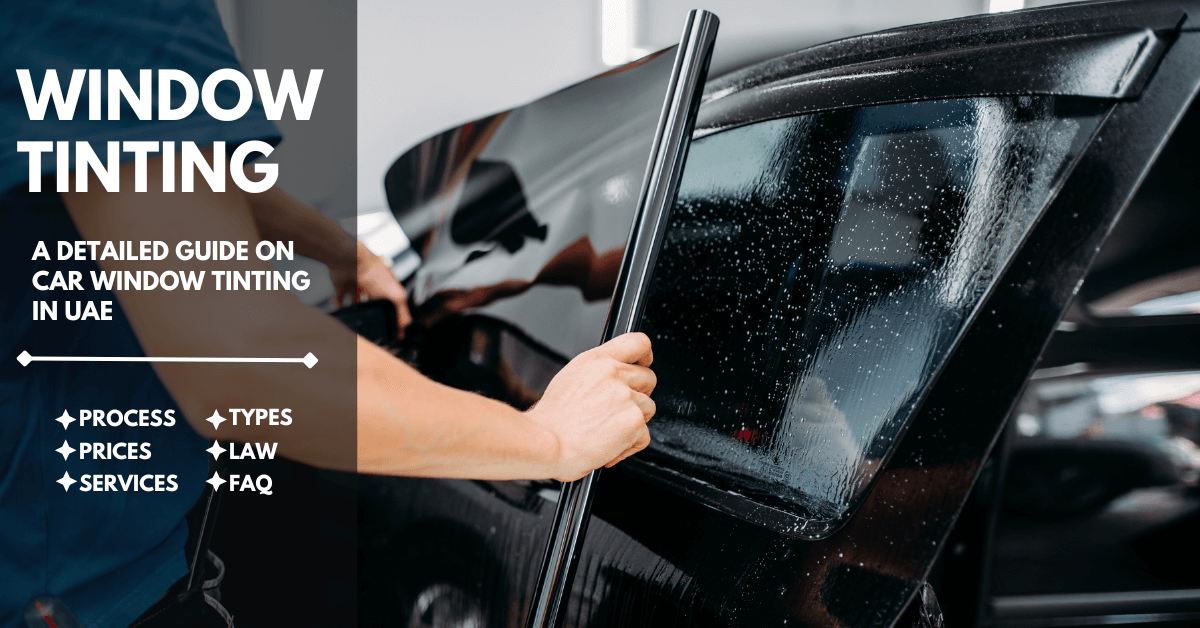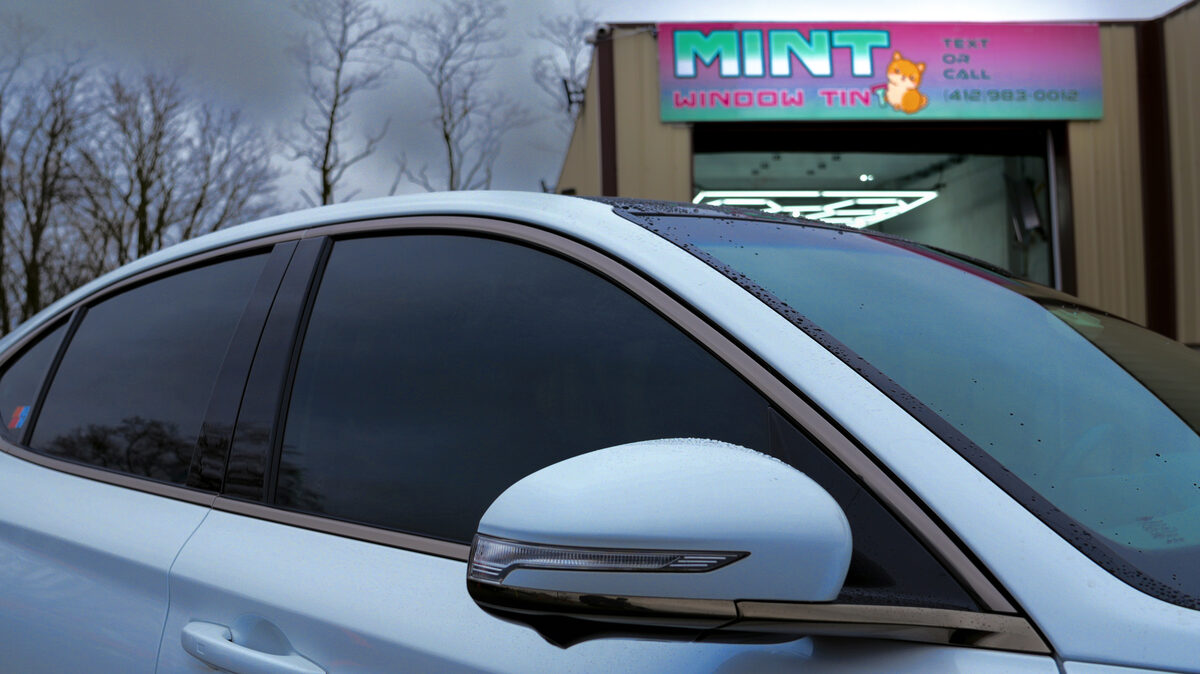A Comprehensive Guide to Understanding Car Home Window Color and Its Advantages
Vehicle home window tinting offers greater than simply a visual function for cars. It uses various types, each with unique functions and benefits. Understanding these options, together with legal regulations and upkeep pointers, is important for any kind of vehicle proprietor. The advantages might significantly boost driving comfort and vehicle long life. As one checks out the subtleties of home window tinting, the inquiry emerges: what sort of tint is best matched for specific requirements?
Comprehending Automobile Home Window Color: What It Is and How It Works
Automobile window color functions as a safety obstacle that boosts lorry looks while giving useful benefits. This slim film is used to the interior surface area of car home windows, minimizing glare and obstructing damaging ultraviolet (UV) rays from the sunlight. By filtering system sunlight, auto home window color helps to manage the interior temperature level of the car, leading to boosted comfort for guests and decreased dependence on air conditioning.Additionally, it safeguards the vehicle's inside from fading, preserving both furniture and control panel products. The tint can likewise improve personal privacy, making it a lot more challenging for outsiders to see inside the lorry. In addition, specific sorts of window tint can boost security; in case of a mishap, the movie assists hold destroyed glass with each other, minimizing the threat of injury from flying shards. In general, vehicle home window tint serves both sensible and aesthetic functions, making it a preferred selection among car owners.
Kinds of Window Tint: An Overview of Options
When considering window color choices, numerous types are offered, each with distinctive qualities. Dyed, metalized, and ceramic home window colors supply varying levels of heat being rejected, UV protection, and aesthetic appeal. Understanding these differences can aid lorry proprietors make notified options based upon their demands and preferences.
Colored Home Window Tint
Dyed home window color stands for a popular option among cars and truck owners looking for a reliable and budget friendly means to boost their automobile's aesthetics and privacy. This kind of tint is produced by placing a layer of color in between a glue layer and a protective layer, leading to a darkened look that decreases glow and improves visual convenience. While dyed home window tint properly obstructs harmful UV rays, it may not offer the very same degree of warm being rejected as various other color types. In addition, its color can discolor with time, potentially decreasing its performance. Despite these disadvantages, colored home window color stays preferred for its cost-effectiveness and ability to give a streamlined, fashionable want to various lorry designs.
Metalized Window Color
Metalized home window color supplies a balance of design and functionality, making it a prominent option among automobile proprietors. This kind of color incorporates metallic particles within the movie, enhancing both visual charm and warmth being rejected. The reflective top quality of metalized color aids to reduce glare and enhance personal privacy, while likewise giving UV defense, which safeguards the vehicle's inside. Additionally, metalized home window tint can enhance home window toughness, possibly preventing shattering during mishaps. Nonetheless, it is crucial to keep in mind that the metallic elements can interfere with digital signals, such as general practitioner and mobile phone reception. On the whole, metalized window tint gives a reliable remedy for those looking for a mix of sun, appearance, and sturdiness defense for their lorries.
Ceramic Window Tint
Ceramic home window color stands for an advanced choice in the spectrum of automotive window movies, supplying unique benefits over typical tints. Unlike colored or metalized films, ceramic colors use advanced ceramic fragments, which properly turn down warm and UV rays without endangering visibility. This modern technology guarantees that lorries stay cooler, decreasing dependence on air conditioning and improving fuel performance. Additionally, ceramic window tints are less likely to hinder electronic devices, such as GPS or mobile signals, making them a useful option for modern automobiles. Their sturdiness and scrape resistance contribute to a longer life-span compared to other kinds of tints. Generally, ceramic home window color supplies remarkable performance, convenience, and protection, making it a favored alternative for discerning lorry owners.
Benefits of Vehicle Home Window Tint: Beyond Aesthetic Appeals
While many individuals associate vehicle home window tint with enhanced design, its benefits extend far past simple aesthetics. One substantial benefit is warmth reduction; home window tint can obstruct as much as 99% of harmful UV rays, keeping the indoor cooler and shielding upholstery from fading. This not only improves comfort throughout hot weather but also decreases reliance on a/c, causing boosted gas efficiency.In enhancement, automobile window color supplies an added layer of privacy and protection. Colored windows make it challenging for outsiders to see inside the car, which can discourage burglary and shield valuables. In addition, many tints reinforce the glass, reducing the probability of ruining in case of a mishap, thus enhancing safety.In enhancement to these practical benefits, auto home window tint can additionally add to glow decrease, improving presence for travelers and chauffeurs alike. This multifaceted method to convenience and safety and security makes window tint a beneficial financial investment for car proprietors.
Lawful Factors To Consider: Tinting Rules by State
Before committing to vehicle window tint, lorry proprietors should navigate a complicated landscape of tinting policies that differ by state. Each state has specific laws governing the permissible degrees of tint darkness and reflectivity for various windows, consisting of windshields, front side windows, and rear home windows. These guidelines usually consist of visible light transmission (VLT) percents, which dictate just how much light can travel through the colored glass.Some states allow darker tints on back windows while restricting front side and windscreen tints for safety reasons. In addition, certain states may call for a certificate from the producer to confirm compliance with tinting laws. Going against these laws can result in fines, necessary elimination of the color, or both. As a Get More Information result, it is important for automobile proprietors to research their state's laws thoroughly to assure legal compliance before mounting window color. This diligence can save time and money over time.
Selecting the Right Color: Aspects to Take into consideration
When selecting the proper window color for a vehicle, numerous essential factors come right into play. Color darkness degrees, UV defense rankings, and conformity with lawful policies are essential considerations to guarantee both looks and capability - Car Glass Tinting. Evaluating these aspects will aid people make an enlightened choice that satisfies their requirements and abides by neighborhood legislations
Color Darkness Levels
Selecting the proper color darkness level is necessary for attaining the preferred equilibrium between appearances and performance in car window tinting. Various states have differing lawful guidelines relating to color darkness, which can impact the selection. Usually, tints are measured in percentages, with reduced portions suggesting darker tones. Darker colors use increased privacy and a sleek appearance however can decrease exposure, especially during the night. On the other hand, lighter tints preserve a more open feel, ensuring ample visibility while still offering some warm and glare reduction. Individuals must consider their driving habits, neighborhood legislations, and personal preferences when making a decision. Inevitably, the best color darkness degree boosts the car's appearance while making sure safety and security and compliance with legal criteria.
UV Protection Score
Color darkness levels play a substantial duty in the general performance of auto window tinting, yet another vital element to examine is the UV defense rating of the my response selected color. This rating indicates the portion of dangerous ultraviolet rays that the tint can block. Top notch tints commonly provide 99% or more UV defense, safeguarding travelers and the automobile's inside from sunlight damage. Extended exposure to UV rays can bring about skin issues and fading of furniture, making a high UV security ranking essential for health and durability. When choosing home window tint, customers should prioritize this score along with darkness degrees to ensure maximum comfort and safety and security while driving. Comprehending these factors help in making an informed choice when buying vehicle window tinting.
Lawful Laws Conformity
Recognizing neighborhood lawful laws is crucial for anyone taking into consideration auto home window tinting. Each state or area has particular laws governing the allowable degrees of color darkness and reflectivity for different home windows. These guidelines usually specify the noticeable light transmission percent, determining just how much light can travel through the colored glass. Non-compliance can bring about penalties, required removal of the color, or problems during vehicle inspections. In addition, some areas might have constraints on using particular tinting materials, calling for consumers to select items that satisfy safety and security requirements. It is essential for lorry owners to investigate their local legislations extensively prior to picking window color to ensure compliance and prevent prospective lawful issues.
Installment Refine: do it yourself vs. Specialist Solutions
How does one make a decision between a DIY installation and hiring specialist services for car home window tinting? The choice typically depends upon budget, experience, and desired results. A do it yourself method can be economical, permitting individuals to minimize labor prices. It calls for a specific level of ability and expertise regarding the tinting procedure. Those who are careful and person might locate success with DIY packages readily available in the market.Conversely, professional solutions use know-how and top notch materials, guaranteeing a remarkable finish. Professionals frequently ensure their job, supplying satisfaction versus prospective see here now issues such as peeling or bubbling. Additionally, they recognize with local laws concerning tinting, which can be complex for the ordinary car owner.Ultimately, the choice reflects a balance in between cost, personal capability, and the expected quality of the tinting job. Each choice has its benefits, and the very best choice depends upon individual scenarios and preferences.
Upkeep Tips: Maintaining Your Tint in Top Condition
Maintaining the appearance and performance of home window color needs routine attention and treatment, especially in varying weather. To protect the tint, it is vital to avoid utilizing rough cleaning materials, which can scrape or harm the film. Car Glass Tinting. Instead, soft microfiber fabrics and gentle, ammonia-free cleaners need to be made use of for cleaning up the colored surfaces.Furthermore, it is a good idea to wait at the very least one month after installment before cleaning the windows to allow the color to totally stick. Car park in shaded areas or utilizing sunshades can help in reducing the fading impacts of UV rays and extend the color's life-span. Routine inspections for bubbles, peeling, or staining are advised, as early discovery can help with repairs. Avoiding severe temperature fluctuations, such as pushing warm windows in cold climate, will help keep the tint's honesty and look over time.
Frequently Asked Inquiries

The Length Of Time Does Window Color Typically Last on an Automobile?
Home window tint normally lasts between five to 10 years, depending upon factors such as high quality, application, and ecological conditions. Regular maintenance and correct treatment can expand its life-span, making sure perfect performance and appearance over time.
Can Home Window Tinting Damage My Automobile's Original Glass?
Home window tinting, when used appropriately, does not harm a cars and truck's initial glass. Nevertheless, improper installment or low-grade materials may bring about concerns like peeling off or bubbling, potentially impacting the glass's integrity gradually.
Is Home Window Tinting Safe for All Types of Vehicles?

Will Home Window Tinting Gap My Cars And Truck Guarantee?
The concern of whether window tinting voids a cars and truck guarantee frequently relies on the manufacturer's policies. Typically, if the tint does not damage the automobile, guarantees generally continue to be intact. However, seeking advice from the supplier is advisable.

Can I Get Rid Of Home Window Tint Myself if Needed?
Getting rid of window color oneself is feasible, however it requires careful interest to prevent damaging the glass. Individuals must make use of appropriate devices and strategies to ensure a successful removal without leaving glue residue or scrapes behind. While dyed window tint properly blocks unsafe UV rays, it might not offer the exact same level of warm rejection as various other tint types. Ceramic window tint stands for a sophisticated choice in the spectrum of auto home window films, providing distinctive advantages over standard tints. Before committing to automobile home window tint, automobile owners should browse a complex landscape of tinting laws that vary by state. These laws frequently include noticeable light transmission (VLT) percents, which determine how much light can pass through the colored glass.Some states permit darker tints on rear windows while limiting front side and windshield colors for safety and security factors. Color darkness degrees play a considerable function in the overall performance of car window tinting, however another important element to examine is the UV security ranking of the chosen tint.